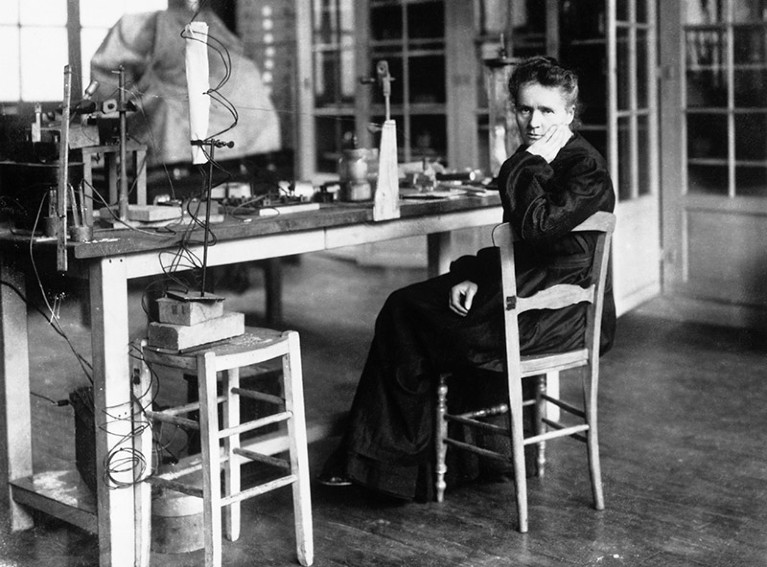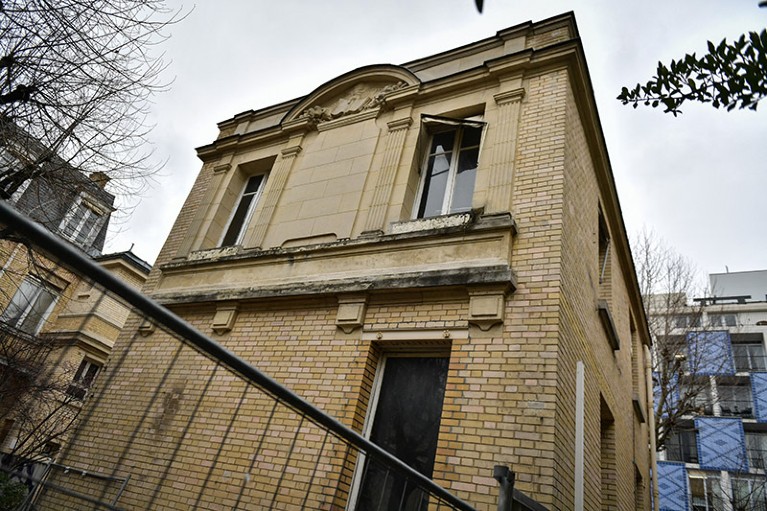
[ad_1]

French-Polish chemist Marie Skłodowska-Curie discovered radium and later used radioactivity to treat patients at the Radium Institute in Paris.Credit: Hulton-Deutsch Collection/Corbis via Getty
A row over a building once used by chemist Marie Skłodowska-Curie has been resolved following negotiations between the French culture ministry and a group of scientists who want to demolish the site to build a leading cancer-research centre.
The resolution, announced on 31 January, will allow the scientists at the Curie Institute in Paris, one of France’s premier biomedical-research institutes, to build their €13-million cancer centre on the site. The Pavillon des Sources — one of three buildings of the historic Radium Institute, and where Curie and others prepared samples — will be dismantled, decontaminated and reconstructed nearby.
“It is a wonderful news as we will be able to move forward with the development of chemical biology at Institut Curie, while preserving the rich heritage of Marie Curie,” says Raphaël Rodriguez, a chemical biologist at the Curie Institute who is set to co-direct the new centre.
The row over the future of the Pavillon des Sources, in Paris’s ritzy 5th district, drew global media attention last month after a social-media campaign by heritage protectors said that “Marie Curie’s lab” was to be destroyed. The campaign caught the attention of the French culture ministry, which abruptly halted the demolition on 5 January.
Not Curie’s lab
The Curie Institute scientists, who had won planning permission for the new research centre from Paris authorities, say that the media campaign misrepresented the old building’s scientific significance. Curie and others used the Pavillon des Sources to store radioactive sources and to prepare samples for research. It was built between 1911 and 1914 after Curie won her Nobel prizes in physics in 1903 and chemistry in 1911, and was not an experimental lab when she did that foundational research. Although unlikely to still be radioactive, the Pavillon des Sources has long been locked down by the French atomic-safety authority and people are not allowed inside.
Curie founded the Radium Institute, which later evolved into the Curie Institute, to use chemistry and the knowledge of radioactivity to treat patients. The Radium Institute’s other two buildings, including the chemist’s former lab, the Pavillon Curie — which is a museum — and the Pavillon Pasteur, remain untouched.

The Pavillon des Sources in Paris housed radioactive sources for research, and has long been locked down by the French atomic-safety authority.Credit: Abdullah Firas/ABACA/Shutterstock
“Her lab is still there, it is maintained, we are not going to touch it,” says Rodriguez. “So claiming that Marie Curie’s lab is going to be destroyed is just fake information.”
In a press release announcing the compromise, French culture minister Rachida Dati said: “The Pavillon des Sources will be preserved. It will be dismantled and reassembled stone by stone a few dozen metres away, adjacent to the museum, which will then be enlarged.”
“Supporting tomorrow’s research means respecting the great researchers and constantly striving to extend their research approaches,” says Dati’s statement.
Crucial chemical biology
The proposed Chemical Biology of Cancer Centre has been in planning for five years and is modelled on the prominent Memorial Sloan Kettering Cancer Center in New York City, which has both research labs and patient-treatment facilities. Researchers at the institute will harness chemical biology — the solving of biological problems by chemical means — to treat cancer.
It’s fantastic news that scientists and authorities have found a solution to build the centre, says Ángela Nieto, a cell and cancer biologist at the Neuroscience Institute at Miguel Hernandez University in Elche, Spain. “I fully agree with the importance and opportunity of establishing a new institute on chemical biology at Curie. I do not have any doubt that this will strengthen a crucial aspect of research.”
The centre’s proximity to the Curie Institute, where there is a hospital and basic-research institute, is essential to its success, says Rodriguez, who thinks it will be the first of its kind in Europe. “You blend within the same building chemists, cell biologists and clinicians and it makes a huge difference when you have breakfast, lunch and dinner with your colleagues,” he says. “This is where you exchange ideas. And that’s a way to bridge the gap between disciplines.”
For example, oncologists treating patients can consult chemists on site, who can immediately take samples of a patient’s tumour and see whether a compound they have synthesized kills the cancer cells in the lab. Modern chemical biology is a natural evolution of Curie’s work, says Rodriguez. The new institute bridges the gap to cell biology.
“By doing cutting-edge research, we are maintaining the rich legacy of Marie Curie’s excellence in research and medicine,” says Rodriguez.
Additional reporting by Barbara Casassus.
Source link




